When you first moved to an in-house counsel role, perhaps your law firm colleagues inferred that you’d given up while simultaneously exhibiting jealousy that you were no longer a slave to the billable hour. According to ACC research, the desire for work-life balance is one of the primary reasons lawyers move in-house. Yet, despite its perceived benefits, in-house work comes with its own set of work-life balance challenges
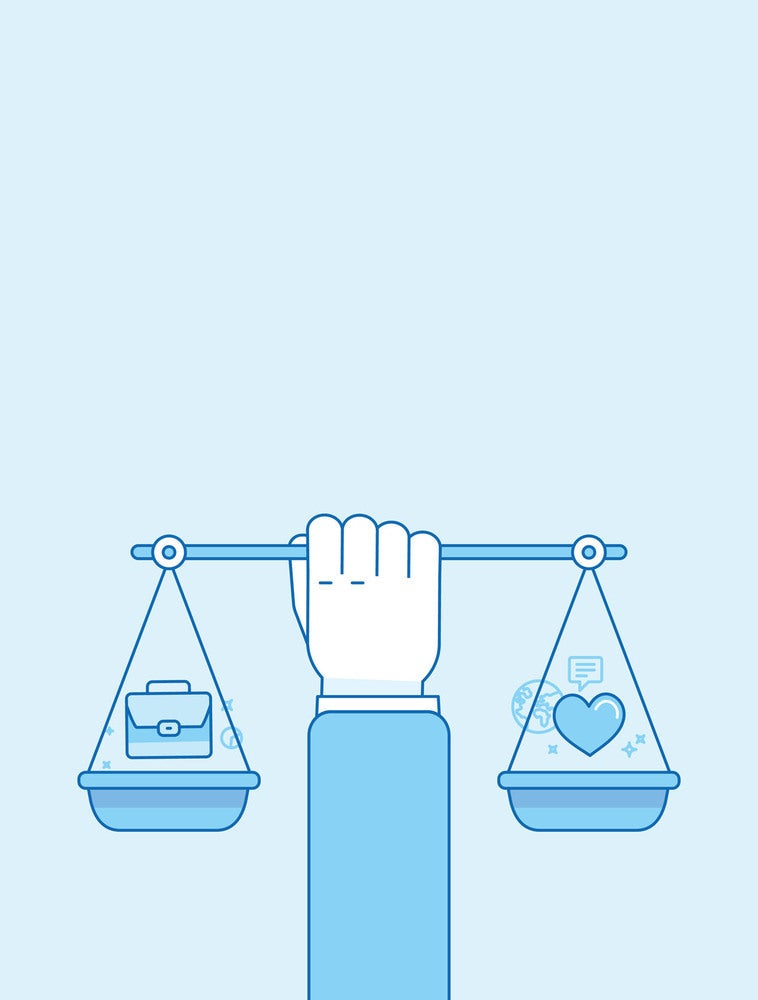
CHEAT SHEET
- Risk. In-house counsel who do not take downtime are at an increased risk for depression, exhaustion, and burnout.
- Institutional support. Formal policies and resources in the workplace that endorse a work-life balance can decrease the negative consequences of work-related stress.
- Start with the leader. Positive leadership styles contribute to subordinates’ mental health, work engagement, performance, and job satisfaction.
- Healthy lifestyle. The American Bar Association recommends meditation, physical exercise, and conflict management training to reduce stress.
The 2014 ACC Global Work-Life Balance Report (ACC Report) offers insight on work-life balance from 2,004 in-house lawyers in 43 countries. Given the large workloads that in-house counsel juggle and the constant global connectivity available in 2018, in-house counsel find it more difficult than ever to disconnect from work. Many of us are working or connected to work 24 hours a day, seven days a week, meaning we never fully shut off, step back, and 100 percent commit to enjoying our lives outside of work.
As the American Bar Association’s The Path to Lawyer Well-Being: Practical Recommendations For Positive Change (ABA Recommendations) points out, lawyers must have downtime to recover from work-related stress because people who do not fully recover are at an increased risk over time for depressive symptoms, exhaustion, and burnout. On the other hand, those who feel recovered report greater work engagement, job performance, willingness to help others at work, and ability to handle job demands. Additionally, the quality of employees’ recovery influences their mood, motivation, and job performance.
Researchers have identified four strategies that are most effective for recovering from work demand, all of which can be challenging in the current constant work culture: (1) psychological detachment, as in mentally switching off from work; (2) mastery experiences, as in challenges and learning experiences; (3) control in spending time off as we choose; and (4) relaxation.
The current around-the-clock connectivity can also have a negative impact on lawyers’ sleep quality, which is critically important in the recovery process. Sleep deprivation has been linked to numerous mental and physical health problems, including depression, cognitive impairment, decreased concentration, and burnout.
Given lawyers’ high risk for depression, it is worth noting that there is evidence that sleep problems have the highest predictive value for who will develop clinical depression.
Of course, the negative consequences of work-related stress can be decreased and perhaps even eliminated by organizational support for destigmatized work-life balance. Interestingly, the ACC Report found that 57 percent of in-house counsel in the United States said that work-life balance was a large factor in their decision to take an in-house position, yet the ACC Report confirms that the workload and intensity of the role, in addition to the stigma associated with utilizing work-life benefits, causes in-house counsel to shy away from using the benefits. The 2015 ACC Global Census: A Profile of In-House Counsel (ACC Census), which provides a profile of 5,012 in-house counsel from 73 countries, also confirms that many in-house counsel cite greater work-life balance as a key factor for moving in-house; however, in-house lawyers work an extended workweek, with most working more than an average of 49 hours per week; 79 percent working between 40 and 59 hours per week; 43 percent working between 50 and 59 hours per week; and 11-17 percent working 60 hours or more.
In fact, one in four in-house lawyers who participated in the ACC Report and are caregivers left their job for one that better supports their caregiving roles. In addition to that, another four percent of caregiver respondents quit work entirely. Seventy percent of female in-house counsel stated that they believe that being a caregiver has had a negative impact on their opportunities for advancement. Only 30 percent of caregivers believe it has had no impact on their opportunities for advancement. It is important to note that the ACC Report found that 55 percent of in-house counsel are caregivers and defines caregivers as those lawyers who have primary care responsibilities for children and other adults who need assistance caring for themselves. This is not a challenge limited to parents of small children. It affects a broad spectrum of caregiving in-house counsel.
One reason lawyers find it difficult to focus on personal and family time is, as the legal expert in their organization, there is often no one to perform their work in their absence. Thus, it’s unsurprising that the ACC Report found that lawyers working in large legal departments expressed more favorable views of the level of departmental support offered to caregivers compared with counsel working in small to mid-size legal departments.
Based on the ACC Report’s findings, the perception of work-life balance also seems dependent on the specific in-house practice area with compliance and ethics, technology, real estate, and employment and labor lawyers being most likely to say that they have considered searching for another role in anticipation of parenting or caregiving responsibilities.
While a study published in 2016 by the ABA Commission on Lawyer Assistance Program and Hazelden Betty Ford Foundation (ABA Study), found that many lawyers experience a “profound ambivalence” about their work. Engagement is not the primary concern for in-house counsel based on the ACC Census, which found that the vast majority, over 80 percent of in-house counsel, are satisfied with their jobs. Additionally, 75 percent of lawyers in an outside legal position reported that they were less satisfied with their job working as a lawyer than those who are in-house. Thus, it does not appear to be the actual work that is the major challenge for in-house counsel. There is still progress needed, given the ACC Report findings that even lawyers who love their work struggle with the demands of a 24/7 career, but at least the work is satisfying to in-house counsel, unlike many of their legal counterparts in law firms and other legal arenas.
Focusing on work-life balance is important to both the lawyer and the organization he or she works for because, as the ACC Report states, “the long-term impact of strains on work-life balance are likely to manifest in turnover, increased health costs, absence, potentially lower productivity, and overall disengagement.” The ACC Report notes that respondents report stress caused by the struggle for work-life balance. While stress is inevitable in lawyers’ lives, it can “lead to negative consequences like burnout when it becomes overwhelming.” Stressors that are uncontrollable, ambiguous, unpredictable, chronic, and that are perceived as exceeding our ability to cope increase or exacerbate depression, anxiety, burnout, alcohol abuse, and physical conditions, such as cardiovascular, inflammatory, and other illnesses that can affect lawyers’ health and capacity to practice. Stress is also associated with cognitive decline, including impaired attention, concentration, memory, and problem-solving.
Both personal and environmental factors in the workplace contribute to stress and whether it positively fuels performance or impairs mental health and functioning.
Both personal and environmental factors in the workplace contribute to stress and whether it positively fuels performance or impairs mental health and functioning. Research reflects that organizational factors, more than individual factors, significantly contribute to dysfunctional stress responses and the most effective prevention strategies target both. In order to formulate and execute such prevention strategies, the ACC Report notes that a shift in mindset through education may be the first step toward creating better retention of talent, corporate knowledge, and understanding of the positive impact of work-life benefits on in-house lawyers’ performance. Leader development and training are critically important for supporting lawyer well-being and optimal performance given low-quality leadership is a major contributor to stress, depression, burnout, and other mental and physical health disorders. On the other hand, positive leadership styles contribute to subordinates’ mental health, work engagement, performance, and job satisfaction. The good news is that many studies confirm that positive leader behaviors can be trained and developed.
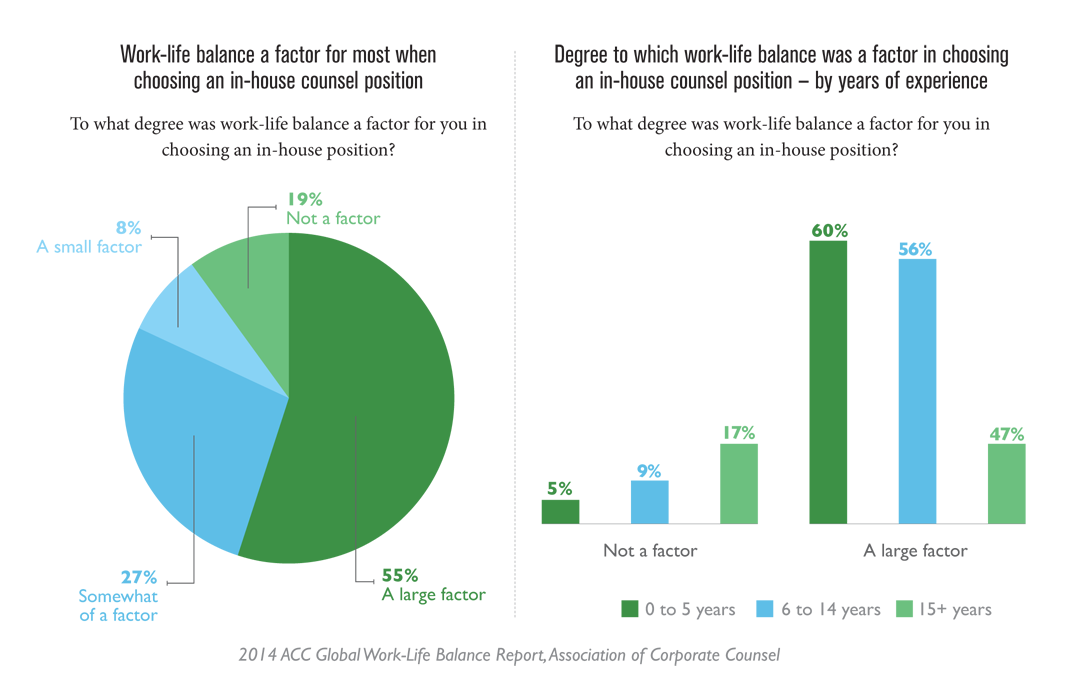
Successful leaders know that the key to greater commitment and productivity is support for employees to use benefits that both encourage career success and meet personal needs
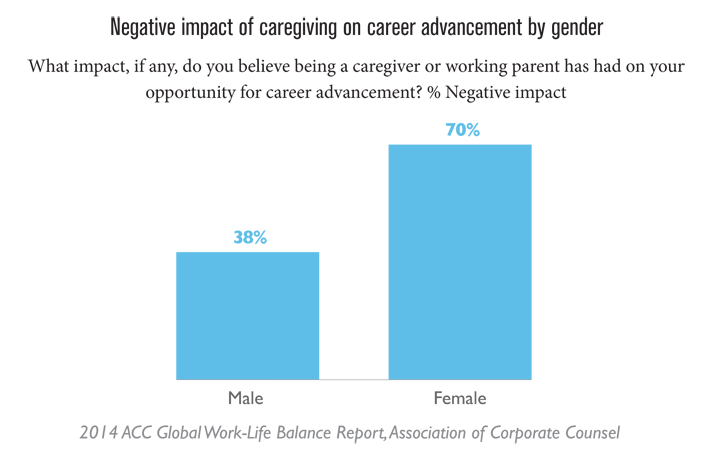
Work-life balance is a complex topic, but research provides guidance on how to develop a work-life balance supportive climate. Adopting a formal policy that endorses flexibility is a threshold requirement. Such policies foster the perception of organizational support for flexibility, which is even more important to workers’ experience of work-life balance than actual benefit use. Policies should not be restricted to work-family concerns, and any training should emphasize support for the full range of work-life juggling issues. Work-life balance initiatives cannot end with formal policies, or people will doubt their authenticity and fear using them. To benefit from work-life balance initiatives, organizations must develop a work-life balance supportive climate. Research has identified multiple factors for doing so:
- Job autonomy;
- Lack of negative consequences for using work-life balance benefits;
- Level of perceived expectation that work should be prioritized over family; and
- Supervisor support for work-life benefits.
The most important factor, by far, is the last. Supervisors communicate their support for work-life balance by, for example, creatively accommodating non-work-related needs, being empathetic with juggling efforts, and role modeling work-life balance behaviors. The ACC Report found that lack of support from managers and leaders will manifest itself in costly turnovers, greater health costs, gradual absences, and potentially lower productivity and disengagement. Whereas work-life balance friendly policies will benefit employers and legal departments with worker retention, improved productivity and engagement, less stress, and improved mental and physical health among workers. Barriers to support for work-life balance benefits include the heavy workloads in-house counsel have as part of their role.
The ACC Report provides several recommendations for acting on the need and desire for work-life balance based on current best practices and on input from 1,300 in-house counsel who made suggestions as part of the study. Such recommendations are particularly important for organizations hoping to retain the next generation of in-house counsel who highly prioritize personal balance and for caregivers who are balancing their career mobility with responsibility for aging parents, children, and others. Some of the ACC Report’s recommendations are:
- Offer individualized workplace flexibility that provides alternate work arrangements or combinations of arrangements: flextime, compressed workweeks, alternate work schedules, part-time work or working fewer hours for part of the year, and telecommuting.
- Make work-life balance support a performance metric for managers and provide education and training to supervisors and managers on work-life balance topics. Create metrics for managers to measure their success in implementing the organizational goals related to work-life balance, retention, and business outcomes/client satisfaction, and make managers accountable for meeting goals.
- Offer eldercare/childcare support, resources, and referral services to employees with caregiving responsibilities. Confidential counselors can provide advice about securing and financing long-term care assistance.
- Implement recruitment, retention, and succession planning practices for caregivers to manage the workload when needed, for example, when caregivers must temporarily reduce their hours or take a leave of absence.
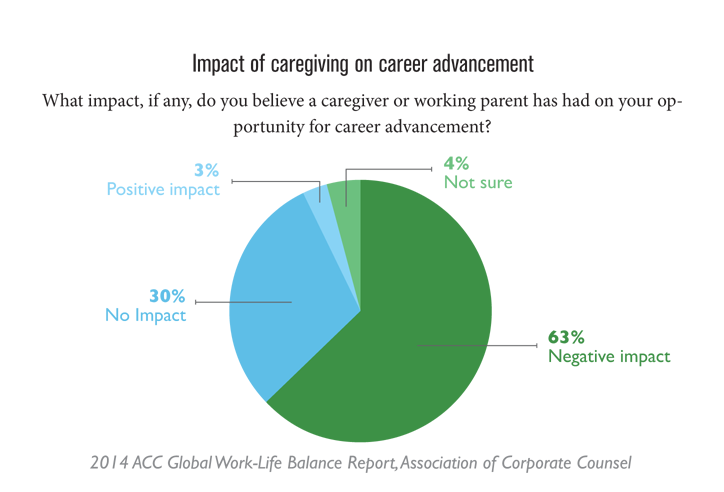
The ACC Report found that benefits like flexible scheduling and telecommuting are highly valued by lawyers everywhere, yet there is a disconnect between benefits offered and employees’ comfort using them. Successful leaders know that the key to greater commitment and productivity is support for employees to use benefits that both encourage career success and meet personal needs. Corporate leaders should recognize that organizational support for work-life balance heavily influences employees’ intentions to leave or stay with their companies.
Healthy lifestyle
In addition to organizational support, in-house counsel themselves can work to stay healthy in their everyday lives and practice. The ABA Recommendations are a great resource and signify the profession’s acknowledgment of these problems. Recommendation 8 advises stakeholders to provide high-quality education programs and materials on causes and consequences of lawyer distress and well-being. It provides a list of example educational topics for such programming with empirical support. This list also operates as a roadmap for preventing or minimizing negative outcomes for lawyers, while this article will briefly summarize a few of those relevant to in-house counsel.
First, mindfulness meditation can enhance cognitive reframing and resilience by aiding the ability to monitor one’s thoughts and avoid becoming emotionally overwhelmed. Research has found that mindfulness can reduce stress, depression, and anxiety. It can also enhance a host of competencies related to lawyer effectiveness, including increased focus and concentration, working memory, critical cognitive skills, reduced burnout, and ethical and rational decision-making. Perhaps most importantly, evidence suggests that mindfulness can enhance the sense of work-life balance by reducing workers’ preoccupation with work.
Second, physical exercise is associated with reduced symptoms of anxiety and low energy. In a review of strategies for preventing workplace depression, researchers found that interventions to increase physical activity were among the most effective. Research also shows that physical exercise improves brain functioning and cognition. Physical activity, which stimulates new cell growth in the brain, can offset the negative effects of stress, which causes brain atrophy. Greater amounts of physical activity (particularly aerobic) have been associated with improvements in memory, attention, verbal learning, and speed of cognitive processing.
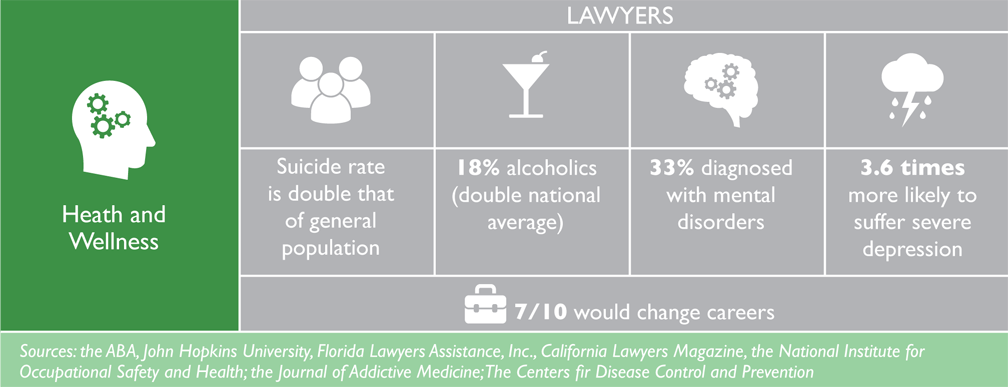
Third, research suggests that conflict management training can reduce the negative stressful effects of conflict and possibly produce better, more productive lawyers. Of course, conflict in legal practice and in one’s personal life is inevitable and can be both positive and negative, but “chronic, unmanaged conflict creates physical, psychological, and behavioral stress.”
Although the legal profession, at large, has begun to acknowledge the struggles lawyers face, the profession appears to have a long way to go in making individual lawyers comfortable with being open and honest about their struggles. Lawyers are often, by their very nature, overachievers and perfectionists who work in a profession that tries to project an image of strength. Thus, it may be particularly difficult for lawyers to be honest with themselves and others if they’re struggling. The greatest concern voiced by lawyer assistance programs in the most recent ABA Commission on Lawyer Assistance Programs (CLAP) survey was under-utilization of their services stemming from the shame and fear of disclosure that are connected with mental health and substance use disorders.
Resources
In-house lawyers may have a resource right at their fingertips if their companies offer an Employee Assistance Program (EAP). In-house counsel who deal with employment matters are, likely, quite familiar with how EAP works. “An Employee Assistance Program (EAP) is a voluntary, work-based program that offers free and confidential assessments, short-term counseling, referrals, and follow-up services to employees who have personal and/or work-related problems. EAPs address a broad and complex body of issues affecting mental and emotional well-being, such as alcohol and other substance abuse, stress, grief, family problems, and psychological disorders.” In-house counsel should feel comfortable making use of EAP if necessary.
Additionally, the ABA CLAP “has a mission to assure that every judge, lawyer and law student has access to support and assistance when confronting alcoholism, substance use disorders, or mental health issues so that lawyers are able to recover, families are preserved, and clients and other members of the public are protected. This mission is carried out by supporting the work of state and local Lawyer Assistance Programs (LAPs) as they provide hands-on services and support to those in need of their assistance.” The CLAP website has a directory of National Resources for help with suicide prevention, chemical dependency and self-help, compulsive gambling, eating disorders, family support, mental health, and sexual addiction and compulsivity. Further, the CLAP website provides a Directory of Lawyer Assistance Programs for all 50 states, the District of Columbia, New York City, Canada, Puerto Rico, the Virgin Islands, and England/Wales/Scotland. This directory includes websites, phone numbers, email contacts, and social media accounts.
Work-life balance and early utilization of resources, such as those above, is important to keep the legal profession healthy and productive given the stakes of not doing so are high. For example, the ABA Study was comprised of nearly 13,000 currently practicing lawyers and found that between 21 and 36 percent qualify as problem drinkers, and that approximately 28 percent, 19 percent, and 23 percent are struggling with some level of depression, anxiety, and stress, respectively. Additional challenges include social alienation, work addiction, sleep deprivation, job dissatisfaction, and negative public perception.
Of course, this article does not provide an exhaustive list of ways lawyers and their support systems can prevent and reverse the possible negative consequences of the profession. However, it does offer a starting point for education regarding the dangers in the legal profession, so that lawyers can actively work to prevent such outcomes for themselves and spot the warning signs in their colleagues and loved ones. Additionally, and particularly vital for in-house counsel, understanding the positive impact of work-like balance benefits is a step toward improving lawyer retention, recruitment, retention, and performance. It is only through education and open-minded honesty that the challenges lawyers face will be conquered. While some of the research is daunting, the future is hopeful as more and more lawyers and organizations acknowledge and confront these challenges.
An Employee Assistance Program (EAP) is a voluntary, work-based program that offers free and confidential assessments, short-term counseling, referrals, and follow-up services to employees who have personal and/or work-related problems.
Further Reading
2014 ACC Global Work-Life Balance Report, Association of Corporate Counsel (2014).
See, e.g., C. Fritz, A. M. Ellis, C. A. Demsky, B. C. Lin, & F. Guros, Embracing Work Breaks: Recovery from Work Stress, 42 ORG. DYNAMICS 274 (2013); N. P. Rothbard & S. V. Patil, Being There: Work Engagement and Positive Organizational Scholarship, in THE OXFORD HANDBOOK OF POSITIVE ORGANIZATIONAL SCHOLARSHIP 56-68 (K. S. Cameron & G. M. Spreitzer eds., Oxford University Press 2012).
BRAFFORD, supra note 131; V. C. Hahn, C. Binnewies, S. Sonnentag, & E. J. Mojza, Learning How to Recover from Job Stress: Effects of a Recovery Training Program on Recovery, Recovery-Related Self-Efficacy, and Well-Being, 16 J. OCCUPATIONAL HEALTH PSYCHOL. 202 (2011).
M. Soderstrom, J. Jeding, M. Ekstedt, A. Perski, & T. Akerstedt, Insufficient Sleep Predicts Clinical Burnout, 17 J. OCCUPATIONAL HEALTH PSYCHOL. 175 (2012).
P. L. Franzen, & D. J. Buysse, Sleep Disturbances and Depression: Risk Relationships for Subsequent Depression and Therapeutic Implications, 10 DIALOGUES IN CLINICAL NEUROSCIENCE 473 (2008).
See D. L. Chambers, Overstating the Satisfaction of Lawyers, 39 LAW & SOC. INQUIRY 1 (2013)
R. M. Anthenelli, Overview: Stress and Alcohol Use Disorders Revisited, 34 ALCOHOL RES.: CURRENT REV. 386 (2012).
E. g., S. M. Southwick, G. A. Bonanno, A. S. Masten, C. Panter-Brick, & R. Yehuda, Resilience Definitions, Theory, and Challenges: Interdisciplinary Perspectives, 5 EUR. J. PSYCHOTRAUMATOLOGY 1 (2014); M. R. Frone, Work Stress and Alcohol Use, 23 ALCOHOL RES. & HEALTH 284 (1999); C. Hammen, Stress and Depression, 1 ANN. REV. CLINICAL PSYCHOL. 293 (2005); Keyes, Hatzenbuehler, Grant, & Hasin, supra note 180; J. Wang, Work Stress as a Risk Factor for Major Depressive Episode(s), 35 PSYCHOL. MED. 865 (2005); J-M Woo & T. T. Postolache, The Impact of Work Environment on Mood Disorders and Suicide: Evidence and Implications, 7 INT’L J. DISABILITY & HUMAN DEV. 185 (2008).
B. S. McEwen, & R. M. Sapolsky, Stress and Cognitive Function, 5 CURRENT OPINION IN NEUROBIOLOGY 205–216 (1995); L. Schwabe & O. T. Wolf, Learning Under Stress Impairs Memory Formation, 93 NEUROBIOLOGY OF LEARNING & MEMORY 183 (2010); S. Shapiro, J. Astin, S. Bishop, & M. Cordova, Mindfulness-Based Stress Reduction and Health Care Professionals: Results from a Randomized Controlled Trial, 12 INT’L J. STRESS MGMT. 164 (2005).
J. C. QUICK, T. A. WRIGHT, J. A. ADKINS, D. L. NELSON, & J. D. QUICK, PREVENTIVE STRESS MANAGEMENT IN ORGANIZATIONS (2013).
Maslach, Schaufeli, & Leiter, supra note 121.
BRAFFORD, supra note 131; R. J. BURKE AND K. M. PAGE, RESEARCH HANDBOOK ON WORK AND WELL-BEING (2017); W. Lin, L. Wang, & S. Chen, Abusive Supervision and Employee Well-Being: The Moderating Effect of Power Distance Orientation, 62 APPLIED PSYCHOL.: AN INT’L REV 308 (2013); E. K. Kelloway, N. Turner, J. Barling, & C. Loughlin, Transformational Leadership and Employee Psychological Well-Being: The Mediating Role of Employee Trust in Leadership, 26 WORK & STRESS 39 (2012).
E. g., A. Amankwaa & O. Anku-Tsede, Linking Transformational Leadership to Employee Turnover: The Moderating Role of Alternative Job Opportunity, 6 INT’L J. BUS. ADMIN. 19 (2015); J. Perko, U. Kinnunen, & T. Feldt, Transformational Leadership and Depressive Symptoms Among Employees: Mediating Factors, 35 LEADERSHIP & ORG. DEV. J. 286 (2014); M. Y. Ghadi, M. Fernando, & P. Caputi, Transformational Leadership and Work Engagement, 34 LEADERSHIP & ORG. DEV. J. 532 (2013).
E. g., B. J. Avolio & B. M. Bass, You Can Drag a Horse to Water, But You Can’t Make It Drink Except When It’s Thirsty, 5 J. LEADERSHIP STUDIES 1 (1998); K. E. Kelloway, J. Barling, & J. Helleur, Enhancing Transformational Leadership: The Roles of Training and Feedback, 21 LEADERSHIP & ORG. DEV. J. 145 (2000).
L. B. Hammer, E. E. Kossek, N. L. Yragui, T. E. Bodner, & G. C. Hanson, Development and Validation of Multidimensional Measure of Family Supportive Supervisor Behaviors (FSSB), 35 J. MGMT. 837 (2009); L. B. Hammer, S. E. Van Dyck, & A. M. Ellis, Organizational Policies Supportive of Work-Life Integration, in Major & Burke, supra note 231; E. E. Kossek, S. Pichler, T. Bodner, & L. B. Hammer, Workplace Social Support and Work-Family Conflict: A Meta-Analysis Clarifying the Influence of General and Work-Family-Specific Supervisor and Organizational Support, 64 PERSONNEL PSYCHOL. 289 (2011).
E. g., S. G. Hoffman, A. T. Sawyer, A. A. Witt, & D. Oh, The Effect of Mindfulness-Based Therapy on Anxiety and Depression: A Meta-Analytic Review, 78 J. CONSULTING & CLINICAL PSYCHOL. 169 (2010); R. Teper, Z. V. Segal, & M. Inzlicht, Inside the Mindful Mind: How Mindfulness Enhances Emotion Regulation Through Improvements in Executive Control, 22 CURRENT DIRECTIONS IN PSYCHOL. SCI. 449.
P. Jha, E. A. Stanley, W. L. Kiyonaga, & L. Gelfand, Examining the Protective Effects of Mindfulness Training on Working Memory Capacity and Affective Experience, 10 EMOTION 56 (2010); D. Levy, J. Wobbrock, A. W. Kaszniak, & M. Ostergren, The Effects of Mindfulness Meditation Training on Multitasking in a High-Stress Environment, Proceedings of Graphics Interface Conference (2012), available at http://faculty.washington.edu/wobbrock/pubs/gi-12.02.pdf; M. D. Mrazek, M. S. Franklin, D. T. Phillips, B. Baird, & J. W. Schooler, Mindfulness Training Improves Working Memory Capacity and GRE Performance While Reducing Mind Wandering, 24 PSYCHOL. SCI. 776 (2013); N. E. Ruedy & M. E. Schweizer, In the Moment: The Effect of Mindfulness on Ethical Decision Making, 95 J. BUS. ETHICS 73 (2010); F. Zeidan, S. K. Johnson, B. J. Diamond, Z. David, & P. Goolkasian, Mindfulness Meditation Improves Cognition: Evidence of Brief Mental Training, 19 CONSCIOUSNESS & COGNITION 597 (2010).
A. Michel, C. Bosch, & M. Rexroth, Mindfulness as a Cognitive-Emotional Segmentation Strategy: An Intervention Promoting Work-Life Balance, 87 J. OCCUPATIONAL & ORGANIZATIONAL PSYCHOL. 733 (2014).
S. Joyce, M. Modini, H. Christensen, A. Mykletun, R. Bryant, P. B. Mitchell, & S. B. Harvey, Workplace Interventions for Common Mental Disorders: A Systematic Meta-Review, 46 PSYCHOL. MED. 683 (2016).
A. Kandola, J. Hendrikse, P. J. Lucassen, & M. Yücel, Aerobic Exercise as A Tool to Improve Hippocampal Plasticity and Function in Humans: Practical Implications for Mental Health Treatment, 10 FRONTIERS IN HUMAN NEUROSCIENCE 373 (2016).
D. L. Haraway & W. M. Haraway, Analysis of the Effect of Conflict-Management and Resolution Training on Employee Stress at a Healthcare Organization, 83 HOSPITAL TOP-ICS 11 (2005); see also Colatrella, supra note 228.22. 2014 COMPREHENSIVE SURVEY OF LAWYER ASSISTANCE PROGRAMS, supra note 25, at 49-50




